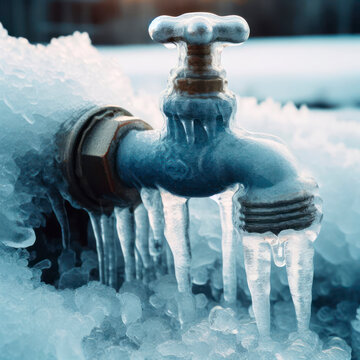Ways to Protect Pipes from Cold Weather Damage: Essential Tips
Ways to Protect Pipes from Cold Weather Damage: Essential Tips
Blog Article
What're your thoughts about Helpful Tips to Prevent Frozen Pipes this Winter?

Winter can ruin your plumbing, especially by freezing pipelines. Here's just how to stop it from taking place and what to do if it does.
Intro
As temperatures drop, the danger of icy pipelines rises, possibly leading to costly repair work and water damage. Comprehending exactly how to avoid frozen pipelines is essential for property owners in cold climates.
Recognizing Frozen Pipes
What causes pipes to freeze?
Pipelines ice up when revealed to temperature levels below 32 ° F (0 ° C) for expanded periods. As water inside the pipes ices up, it broadens, putting pressure on the pipe wall surfaces and possibly creating them to rupture.
Dangers and problems
Frozen pipes can result in supply of water disruptions, residential property damages, and pricey repair work. Burst pipes can flood homes and cause considerable structural damages.
Signs of Frozen Pipeline
Determining icy pipes early can avoid them from bursting.
Just how to recognize icy pipelines
Try to find reduced water flow from taps, uncommon smells or sounds from pipes, and visible frost on subjected pipelines.
Prevention Tips
Shielding prone pipes
Cover pipelines in insulation sleeves or make use of heat tape to safeguard them from freezing temperatures. Concentrate on pipes in unheated or external areas of the home.
Heating strategies
Maintain interior spaces sufficiently heated, especially areas with plumbing. Open up cabinet doors to enable cozy air to circulate around pipelines under sinks.
Shielding Outdoor Plumbing
Garden pipes and exterior faucets
Separate and drain garden tubes prior to winter season. Set up frost-proof faucets or cover outside taps with protected caps.
What to Do If Your Pipes Freeze
Immediate actions to take
If you suspect frozen pipelines, keep taps available to alleviate stress as the ice thaws. Use a hairdryer or towels soaked in hot water to thaw pipes slowly.
Long-Term Solutions
Structural modifications
Take into consideration rerouting pipes far from exterior wall surfaces or unheated areas. Include extra insulation to attic rooms, basements, and crawl spaces.
Upgrading insulation
Buy high-grade insulation for pipes, attic rooms, and wall surfaces. Proper insulation helps keep regular temperatures and lowers the danger of icy pipelines.
Conclusion
Stopping frozen pipelines requires positive actions and quick feedbacks. By recognizing the causes, indicators, and safety nets, house owners can protect their plumbing during winter.
5 Ways to Prevent Frozen Pipes
Drain Outdoor Faucets and Disconnect Hoses
First, close the shut-off valve that controls the flow of water in the pipe to your outdoor faucet. Then, head outside to disconnect and drain your hose and open the outdoor faucet to allow the water to completely drain out of the line. Turn off the faucet when done. Finally, head back to the shut-off valve and drain the remaining water inside the pipe into a bucket or container. Additionally, if you have a home irrigation system, you should consider hiring an expert to clear the system of water each year.
Insulate Pipes
One of the best and most cost-effective methods for preventing frozen water pipes is to wrap your pipes with insulation. This is especially important for areas in your home that aren’t exposed to heat, such as an attic. We suggest using foam sleeves, which can typically be found at your local hardware store.
Keep Heat Running at 65
Your pipes are located inside your walls, and the temperature there is much colder than the rest of the house. To prevent your pipes from freezing, The Insurance Information Institute suggests that you keep your home heated to at least 65 degrees, even when traveling. You may want to invest in smart devices that can keep an eye on the temperature in your home while you’re away.
Leave Water Dripping
Moving water — even a small trickle — can prevent ice from forming inside your pipes. When freezing temps are imminent, start a drip of water from all faucets that serve exposed pipes. Leaving a few faucets running will also help relieve pressure inside the pipes and help prevent a rupture if the water inside freezes.
Open Cupboard Doors
Warm your kitchen and bathroom pipes by opening cupboards and vanities. You should also leave your interior doors ajar to help warm air circulate evenly throughout your home.

As a passionate person who reads about Prevent Frozen Pipes , I assumed sharing that article was a great idea. Are you aware of somebody else who is sincerely interested in the subject? Why not promote it. Thank-you for taking the time to read it.
Go Services Report this page